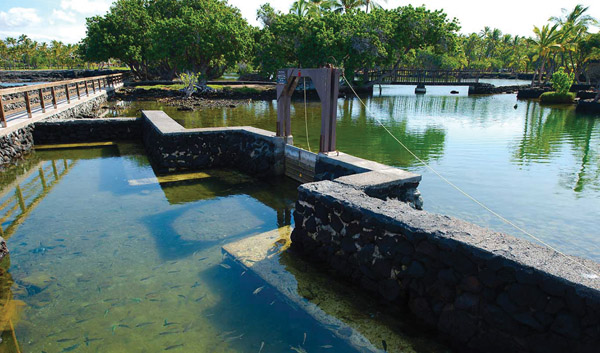
Swimming with Spinners: Plunging into the Swim-with-Dolphins Industry

By Gabrielle Gray and Lindsay Brown
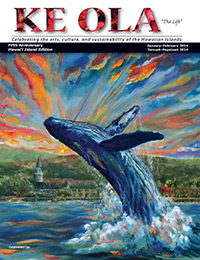
Leaping out of the serene Pacific and thrusting their smooth, graceful bodies into the unsuspecting air, Hawaiian spinner dolphins’ aerial acrobatics are one of the most spectacular displays to witness in Hawai‘i.
Hawai‘i companies are attuned to the breathtaking lure of spinner dolphins’ performances. According to the Hawai‘i State Department of Land and Natural Resources, reefs in Hawai‘i (where spinners cruise in the daytime to rest) are a major part of the ocean recreation industry—an industry that generates millions of dollars in revenue each year (Department).
Yet, interacting with these mammals in their natural habitat is a delicate discourse, and not everyone agrees we should interact so closely with our dorsal-finned friends.
Spanning the social spectrum of the Kona Coast—from Local Hawaiians, to tour guide operators, to visiting university scientists—we begin to understand how different groups of people weigh in on this industry.
The Business

On the Kona coast there are roughly 14 charter companies that offer swim-with-dolphin tours. Dolphin Journeys offers a variety of excursions: whale watching, manta ray sunsets, Hawai‘i Volcanoes National Park tours, Pololū Valley hiking, and snorkeling. Captain Nancy Sweatt says their best-selling tour is the four-hour dolphin journey.
“It is a fabulous morning of meeting the dolphins—upon their invitation,” she says.
The company attracts guests from across the globe—97 percent of whom are visitors to the island.
“We love having kids on the boat, and we have many families,” Nancy says. She continues, “Thirty percent of our guests are return or personal recommendations.”
During whale season (October-April), the dolphin excursion and whale watch/reef snorkel six-hour package is their most popular tour. Dolphin sightings occur 98 percent of the time. Nancy describes the dolphin tours as a different experience every time.
“Some days they are traveling—moving on a mission to get somewhere. Those days the best viewing is from the boat. They love to ride the bow and play, jumping and spinning,” she says.
So swimming with dolphins isn’t guaranteed. Yet there are certain expectations guests have when coming onto the tour.
Nancy says, “The experience everyone dreams of is the days the dolphins are hanging in the bay and wanting to be close to everyone, interacting and swimming alongside them.” In reality, she continues, “Some days the dolphins just do not want us to leave.”
Aside from her role as boat captain, Nancy is also an oceanographer and geologist. She says Dolphin Journeys tracks dolphin behavior in a dolphin log and includes detailed information about dolphin locations and what their behavior is like during the excursions. Their behavior patterns tend to repeat for a week at a time.
“I think the best days are a combination of 30 minutes or so of the dolphins traveling and enjoying them from the boat, then an hour or more of swimming in a bay.”
The Law
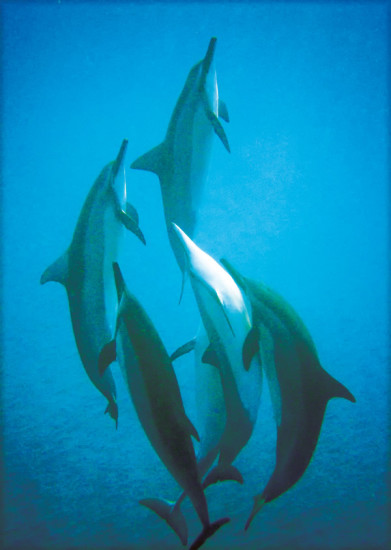
According to the Marine Mammal Protection Act (MMPA) of 19721, Congress determined, “Marine mammals have proven themselves to be resources of great international significance, esthetic and recreational as well as economic, and it is the sense of the Congress that they should be protected…and that the primary objective of their management should be to maintain the health and stability of the marine ecosystem” (Text).
It seems as though governmental observation provided a solid ground on which scientific research could stand. Since the induction of the MMPA, NOAA has set out guidelines that regulate marine mammal and sea turtle viewing in Hawai‘i. In this Code of Conduct, the “pursuit and feeding of marine mammals is prohibited by Federal Law.” Subsequently, NOAA Fisheries has set out these specific dolphin viewing guidelines:
- Remain at least 50 yards (1/2 a football field) from spinner dolphins.
- Limit your time observing to 1/2 hour.
- Spinner dolphins should not be encircled or trapped between boats or shore.
- If approached by a spinner dolphin while boating, put the engine in neutral and allow the animal to pass. Boat movement should be from the rear of the animal.
According to the NOAA website, “NOAA Fisheries does not support, condone, approve, or authorize activities that involve closely approaching, interacting, or attempting to interact with whales, dolphins, porpoises, seals, or sea lions in the wild. This includes attempting to swim with, pet, touch, or elicit a reaction from the animals (Dolphin Viewing Guidelines).
The Emotional Encounters
The standards regulating our interactions with marine life have not deferred people from actively seeking dolphin encounters. Let’s talk for a moment about how people come face-to-face with spinners.
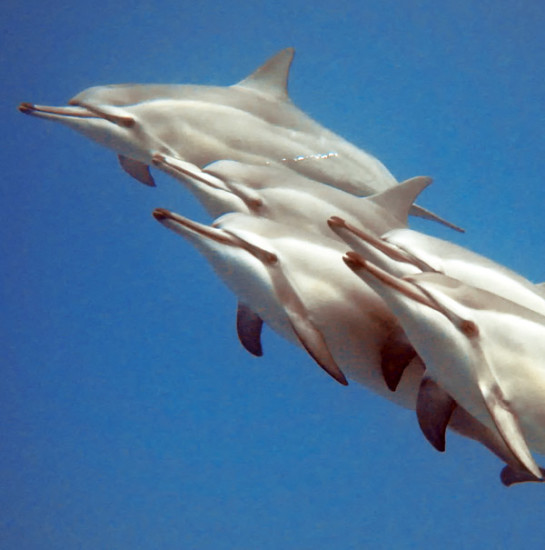 In Nāpo‘opo‘o, I witnessed a mother, father, grandmother, and son holding on to a flotation noodle kicking into the bay. “Dolphin! Dolphin!” the small son exclaimed through breaths in his snorkel. His father replied, “Yes, we are going to see the dolphins. Isn’t this special?” They were supportive, helping each other make the swim.
In Nāpo‘opo‘o, I witnessed a mother, father, grandmother, and son holding on to a flotation noodle kicking into the bay. “Dolphin! Dolphin!” the small son exclaimed through breaths in his snorkel. His father replied, “Yes, we are going to see the dolphins. Isn’t this special?” They were supportive, helping each other make the swim.
Others board a boat where the goal is to swim with spinners. When you’re right next to someone in the water and they exhale, “Oh, my gosh” into his or her snorkel as dolphins pass below, you know the amazement is genuine. During these charters, I have also heard people say swimming with spinners was the most awesome thing they had ever done.
Captain Nancy can attest to this.
“Our guests are so thrilled to see the dolphins. Some have tears of joy. The number one comment we get is, ‘This was the best day of my life—ever!!!’ The experience changes people’s lives. Being with the dolphins reaches into the core of our guests’ hearts and opens them to life in a new perspective—more love and less fear.”
People love this activity and for good reason: there is an emotional element that might be healthy for us. According to Richard Louv in his book, Last Child in the Woods, Nature Deficit Disorder occurs when people are too confined indoors and could be cause for an unappetizing array of behavioral issues. By actively seeking out natural encounters, we may be subverting an unhealthy body and mind (Louv).
The Research
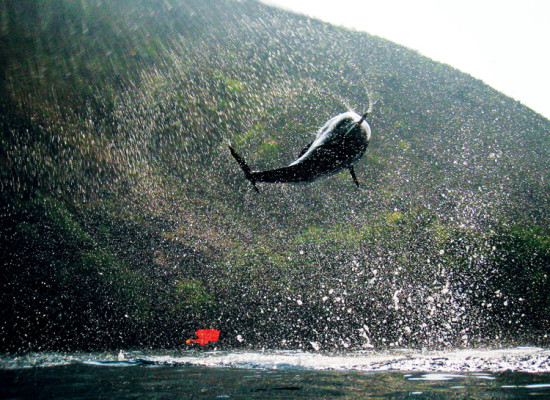
Despite biophilia2 and our empathetic appreciation to get back to nature, we should consider our impact. To look at our footprints we have to understand “normal” dolphin behavior. Spinners are nocturnal feeders, meaning they swim off shore during the night to eat. As pack animals in the deep blue, they work in pairs to form a ball of prey from a thick horizontal layer of small fish and invertebrate that vertically migrates at night. This layer of life is called the mesopelagic boundary layer, or MBL. After the dolphins form a ball of MBL prey, they take turns snatching organisms from the ball. As daylight breaks, the MBL reverse migrates to the depths and spinners move inshore for their resting and socializing period (Johnston). Some well-studied resting spots include Hōnaunau and Ho‘okena.
Because they are nocturnal feeders, spinner dolphins are then diurnal sleepers. NOAA points out, “Even when spinner dolphins are swimming, they actually may still be resting and sleeping. When dolphins sleep they must be partially awake to keep breathing, so they swim slowly, occasionally surfacing for air, allowing half their brain to sleep at a time.”
Since the 1970s, scientists were curious whether or not we were disturbing dolphin sleeping patterns and began studying the behavior of spinners on the Kona coast. Ken Norris worked for 20 years from the 1970s to the 1990s, focusing on the effects human vessel activity had on spinner behavior. When Ken Norris first began conducting his research, he paid respect to the local people who inhabited the shores of the Kona Coast. At the start of his research, he hosted a lū‘au and invited local residents, honoring them and their relationship with the dolphins.
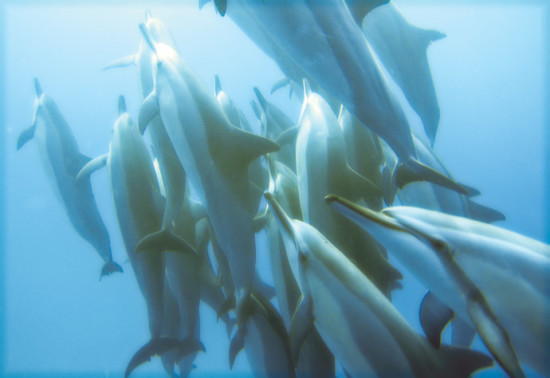
Recently, a group called SAPPHIRE—Spinner Dolphin Acoustics, Population, Parameters and Human Impacts Research—took the torch, asking questions about tourism action and dolphin reaction (Heenehan).
“As the dolphins begin or end their resting period, they engage in aerial spinning and leaping behaviors that are noticeable from shore. However, when they are in a period of rest, their behavior consists of synchronous dives and swimming in quiet formation” (Spinner Dolphin). This is perhaps a measure of “normal” dolphin behavior. Ideally, scientists will find a spot where people are not actively swimming with spinners in order to get an accurate measure of their behavioral patterns (Heenehan).
NOAA advises we leave them be.
“When people swim with resting wild spinner dolphins, the dolphins may be drawn out of their resting state to investigate the swimmers. This may be a change in behavior which may constitute ‘harassment’ under the Federal law that protects them and other marine mammals…Any act of pursuit, torment, or annoyance that has the potential to disrupt a marine mammal’s behavior is ‘harassment’ under this Act and is, therefore, against the law.”
First-hand Experience
Penn Henderson, director of sales and marketing at Fair Wind says his company does not advertise, “nor do we specifically go out of the way in search of viewing or swimming with dolphins on any of our tours.” Penn adds, “Fair Wind has always tried to respect the dolphin’s natural ‘space.’”
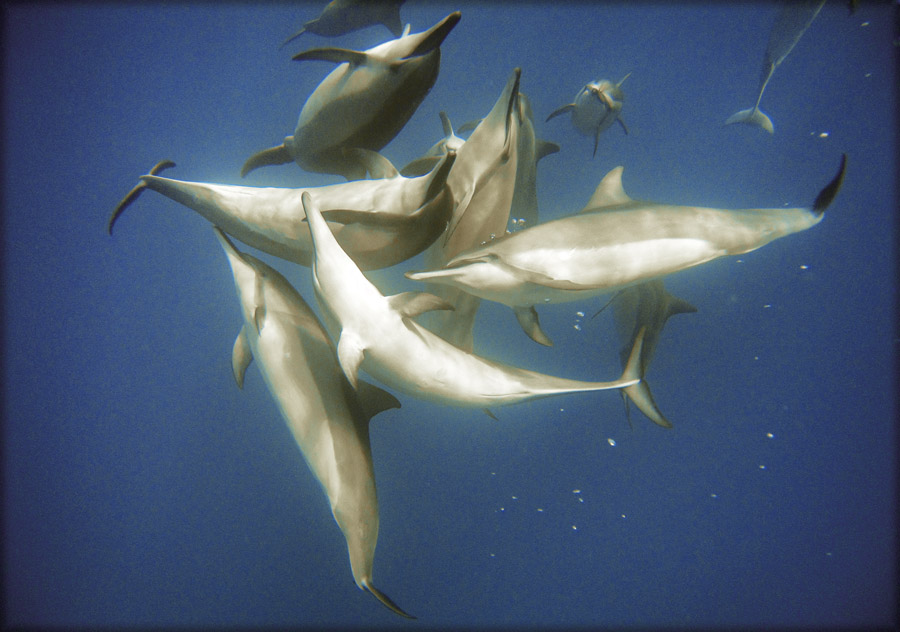 Although they are not promoted or guaranteed by Fair Wind, Penn explains sightings can occur.
Although they are not promoted or guaranteed by Fair Wind, Penn explains sightings can occur.
“There are occasions when dolphins may swim into the snorkeling area of Kealakekua Bay while the vessel is moored (rarely),” Penn says, adding, “however this is their choice (not vice-versa).”
I talked with a local fisherman, who’ll be known as Frankie, about spinner dolphins.
“I fish with them on the inside,” Frankie says. “You can tell when they want to play because they’ll swim in our wake, but we don’t chase ‘em down. We keep going our own way and they go theirs…we never did mess with them. The dolphins outside of my home [in Ka‘ū] swim right up to the shore…if they like they can dig out whenever they like.”
Captain Nancy says that although her company’s business profits off these creatures, they don’t exploit the dolphins in any way.
“Dolphin Journeys principal is to never disturb the dolphins. We care deeply about the dolphins. It is of the utmost importance that respect for the dolphins and their well being is first and foremost,” she says.
Aunty Mahealani Kuamo‘o-Henry, a Hawaiian cultural teacher says that further dolphin/human interaction regulations are not necessary. Further regulations, she says, “Would prevent me, my ‘ohana, family and others from engaging, interacting, and swimming with our ocean ‘ohana—our dolphins who share our homeland of Hawai‘i.”
Captain Nancy believes whole-heartedly through her experience that dolphins are free agents when it comes to human interactions.
“They are excellent at taking care of themselves,” she says, pointing out, “Dolphins will out-swim a human any time they want. If they did not want to be with the boats, they would go away.”
Dolphins are intelligent creatures, no doubt. Nancy argues that their behavior would adapt accordingly if necessary, adding, “It’s a big ocean and they have lots of choice.”
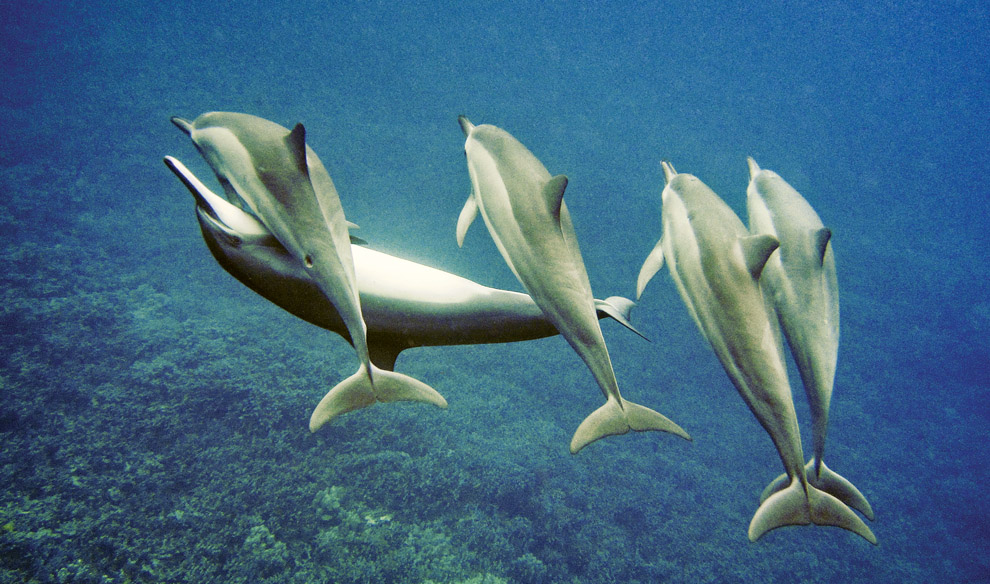
Just Keep Swimming
It is easy to observe how dolphins are responding to humans: are they swimming close and sticking around, or are they fleeing from them? Communication from their body language at times displays an obvious message. It may be the answer. Still, they remain a wild and curious animal that we cannot understand fully, to say with certainty what is enjoyment or disturbance on their behalf.
In 2012, “arrivals by air to Hawai‘i Island increased 8.7 percent [from 2011] to 1,433,282 visitors3” (Annual). According to this data, the number of visitors to Hawai‘i Island is increasing. As more people travel here hoping to explore the wonders of the ocean, regulating and educating is essential.
When it comes down to it this issue is a matter of personal choice. Each decision is supported by reason and we can never irrefutably know what is “right” and what is “wrong” because we cannot ask dolphins what to do. However, we do have the ability of direct, intention-based observation. Economically, it is to our benefit to keep the coastline healthy. Spiritually, it is in our best interest to respect nature. Perhaps this is a matter of fine-tuning our etiquette and relations toward marine life, and listening to our gut when it tells us what to do. Whether you swim with dolphins or swim solo—be safe in the water, respect all the ocean’s creatures, and have a fantastic time immersing yourself in the depths of nature. ❖
Footnotes
- Policy 16 U.S.C. 1361
- The biophilia hypothesis, introduced by Edward O. Wilson, suggests a bond between humans and other life forms on earth.
- However, the highest number of visitors in the last 10 years was between 2005 and 2007 (Annual).
References
2012 Annual Visitor Research Report, Hawai‘i Tourism Authority, 2012, Online, Nov. 2013.
Department of Land and Natural Resources Sustainability Hotspot, DLNR Hawai‘i, Kona Coast, Online, Nov. 2013.
Dolphin Viewing Guidelines, NOAA Fisheries, Online, Nov. 2013.
Hawaiian Viewing Guidelines: Overview, NOAA Fisheries, Online, Nov. 2013.
Heenehan, Heather, et all, “From Norris to Now,” SAPPHIRE, 2010–2011, Online, Nov. 2013.
Johnston, Dave, A Hard Days Night: Spinner Dolphins Also Need Their Rest, Vol 28 No 2, University of Hawaii Sea Grant College Program. Summer 2006. Online. Nov. 2013.
Louv, Richard. Last Child in the Woods, Chapel Hill: Algonquin Books, 2005.
Spinner Dolphin, American Cetacean Society, 2006. Online, Nov. 2013.
Spinner Dolphin and Human Interaction EIS Information Update. NOAA Fisheries Service. Jun. 2007, Online, Nov. 2013.
Stenella Longirostris, IUNC List of Threatened Species, Jan. 2013. Online, Nov. 2013.
Text of the Marine Mammal Protection Act, NOAA Fisheries, Online, Nov. 2013.
Contact Penn Henderson: Fair-Wind.com
Contact Nancy Sweatt: DolphinJourneys.com
Contact photographer Cecily Reading: joycreated@gmail.com
Contact photographer Kathleen Carr: KathleenTCarr.com
Contact writer Gabrielle Gray: Gabriellegraygray@gmail.com
Contact writer Lindsay Brown: keolamag.lb@gmail.com


